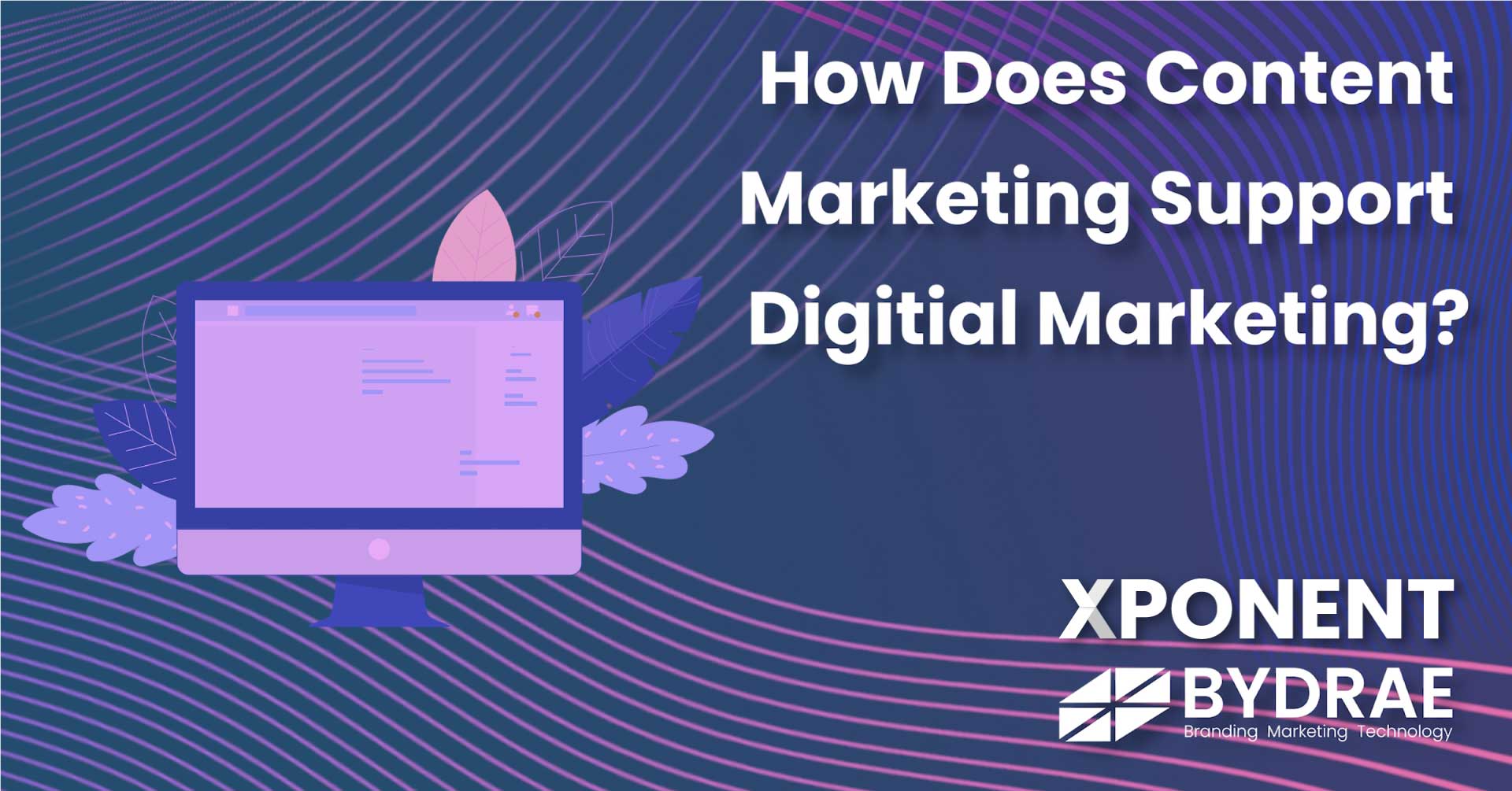At Xponent, we have had our fair share of content marketing vs digital marketing conversations. If you are not a marketing fiend, you may assume that the two are one in the same thing. And sure, we understand why.
“Content” is essentially what you find in the digital landscape. Content writer, content creator, content editor, and the list goes on, but people fill all these roles with great skills and experience. They are there for an excellent reason. But how do content marketing skills support digital marketing?
Content Marketing
In a previous article, we broke content marketing down to the core. If you missed it, we suggest you catch up here. Quick recap – Content marketing uses data to drive your digital marketing decisions. This means translating data into a creative process your marketing team can follow and implement.
Data helps you choose and identify the correct keywords, images and other notable content you need for a successful digital marketing campaign.
Digital Marketing
We live in a world where we do not have to explain this one, but let’s go! Digital marketing is only a component of an overall marketing strategy. Although most companies have some sort of digital marketing plan active, it doesn’t mean they fully understand the ins and outs. Digital marketing is so much more than just having an online presence.
Digital marketers sell and advertise their client’s products and services via the internet with a clear strategy. No business can afford to waste a valuable marketing budget on ineffective digital marketing.
Your Website and Words
One of the most significant content issues we face when we get a request to redesign a website for a client is the low word count. Your webpage does not have enough words for Google to notice. Credibility matters, and visitors should know that YOU know what you are talking about.
Content writing is critical and can help you reach audiences for years. Xponent believes in evergreen content. We have articles written from two years ago, bringing more website visitors to our clients than their actual ad spend. Good content writing may cost you now, but it will be doing the advertising for years to come – for free.
Millennials and Gen Z’ers are now your audiences. They don’t care about how long you have been in business. They care about the quality of your services and products. Talk about your products, and tell customers why your services are the best. Sell that.
According to Wunderman Thompson, “Millennial spending sits at just over $65 billion – whilst Generation Z is at almost $100 billion”. We won’t even bother to convert that into Rands.
Everything on your website should be an active attempt to sell your products and services. If you share irrelevant information that does not sell your company consistently, why even have a website to start with?
Visuals that Matter
Visual content is valuable content. Effective content marketing may rely on a content curator or editor to step in here. Designing and choosing the correct visuals can significantly impact your bounce rates, general visitor counts, and clicks.
Social media posts and visuals effectively promote products, services, and brands because our brains process images better and faster than text. More than 90% of the data processed by the brain is images, and the brain can remember and understand text better when pictures are next to it.
More importantly, the images that populate Google’s results page determine how closely the search terms match the image filenames (alternative text). This is not usually enough, so Google Images also uses contextual information from the text on the same page as the image.
For example, if you sell Honed Tube, you will ensure the search term (honed tube) appears in your text and visuals appropriately.
Alternative text is used to explain the purpose of an image on a web page or document. It is read aloud by screen reader software for visually impaired users, and search engines index it.
Measuring Success
Decision makers in business are often faced with a situation where they don’t know what marketing is working and what isn’t. The saying goes, “the main problem with marketing is that 50% of my marketing is effective. The problem is I just don’t know which 50%”.
Because of this, agencies struggle to know precisely where a sale came from. Beyers Hauptfleisch, Marketing Director at Xponent, shares, “Measuring a marketing department shouldn’t be done by measuring only leads or web traffic, but rather the business’s overall revenue. That’s because we’re not only measuring marketing, we’re also measuring advertising and branding. The key here is to avoid trying to measure overarching marketing or branding activities by measuring the specific needs or traffic generated by that campaign. That measurability doesn’t give you a clear idea of what is working and what isn’t”.
More often than not, people will say, “I don’t know where the leads are coming from”, “I don’t know where the success is coming from”, “I’m not sure where the traffic is coming from”, etc.” If you’re gaining new customers and your company’s revenue numbers are growing, that’s probably because of the marketing.
“It’s such a weird thing to say, Beyers continues, “because ultimately, why wouldn’t it be the marketing? Many businesses are skittish to prescribe success to the marketing teams working on their projects. This could be because they think then the marketing company will stop working as hard or that they won’t get their money’s worth from the marketing business. Nothing could be further from the truth”.
If you can show the success and prescribe it to the marketing team, they’ll feel so motivated by your praise that they will ultimately work harder because people just like to win. They want to succeed, so keeping the win away from the marketing team hurts the overall marketing effort instead of looking for ways to prescribe success”.
Learn more about our digital marketing services.




